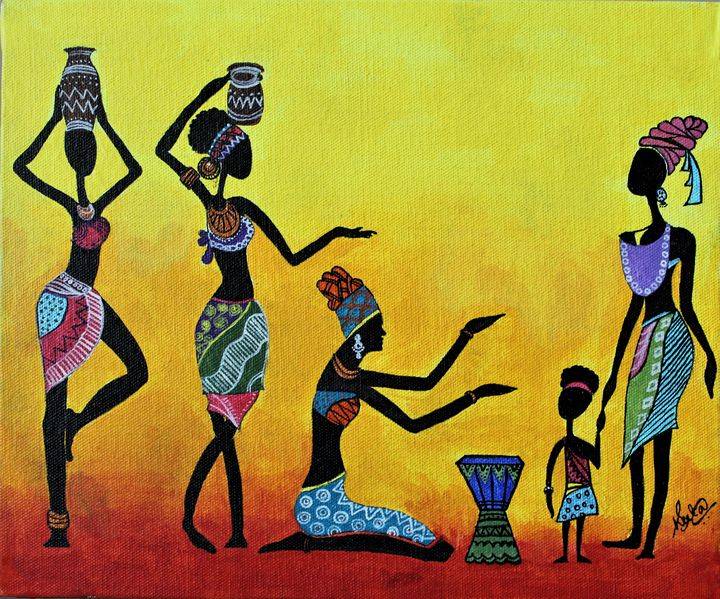Exploring Artistic Forms Around the World
Art has been an essential part of human culture since the dawn of civilization. It serves as a means of expression, storytelling, and communication that transcends language and geographical barriers. From ancient sculptures to modern street art, each region of the world boasts unique artistic forms that reflect its history, beliefs, and identity. In this blog, we'll take a journey through some of the most fascinating and diverse art forms from various cultures around the world.
1. African Tribal Art
African tribal art is rooted in the traditions and spiritual beliefs of indigenous peoples. One of its most striking aspects is the use of masks and sculptures, often carved from wood or molded from metal. These objects play a crucial role in ceremonies and rituals, symbolizing ancestors, deities, or spiritual forces. The bold patterns, intricate designs, and symbolic meanings embedded in African art often communicate stories of life, death, and the cycle of nature.
For example, the Baule people of Côte d'Ivoire are known for their beautifully carved wooden masks and figures. Their art represents harmony and beauty and is often used in ceremonies meant to connect with ancestors. African art also profoundly influenced modern European artists like Picasso, whose work reflected a strong connection to African forms, especially in his later pieces.
2. Japanese Ukiyo-e Woodblock Prints
Japan’s artistic legacy is marked by delicate and precise craftsmanship, and Ukiyo-e woodblock prints are a prime example. Popularized in the 17th century, Ukiyo-e (literally “pictures of the floating worldâ€) focuses on themes like landscapes, theater scenes, and beautiful courtesans. These prints were often used to decorate homes and served as a way for the common people to enjoy art.
Artists like Hokusai and Hiroshige became famous for their detailed prints of nature and everyday life, with Hokusai's The Great Wave off Kanagawa being one of the most recognized artworks in the world. Ukiyo-e prints left a lasting impact not only in Japan but across the world, influencing the development of Impressionism and Post-Impressionism in Europe.
3. Indian Rangoli
In India, art is often intertwined with religious and cultural festivities. Rangoli is one of the most visually stunning examples of this tradition. This ephemeral art form is created using colorful powders, flowers, or rice and is made on the ground, especially at the entrances of homes during festivals like Diwali. The patterns can be geometric, floral, or figurative, often passed down through generations of women.
Rangoli represents auspiciousness and is meant to invite prosperity, happiness, and good luck. Each region of India has its own style and tradition when it comes to Rangoli, such as the Kolam in Tamil Nadu and Muggulu in Andhra Pradesh. These vibrant artworks, though temporary, symbolize the transient nature of life and the beauty found in impermanence.
4. Latin American Muralism
Latin American muralism, particularly prominent in countries like Mexico, is an art movement that emerged in the early 20th century as a response to political and social changes. Murals, painted on public buildings and walls, became a powerful medium for artists to convey messages of revolution, identity, and the struggles of the working class. They often depict stories of indigenous peoples, colonialism, and the fight for justice.
One of the most famous figures of this movement is Diego Rivera, whose vibrant murals can still be seen in Mexico City today. His work, along with that of other artists like David Alfaro Siqueiros and José Clemente Orozco, helped shape a new national identity for Mexico after the revolution. Latin American muralism also inspired public art movements worldwide, including modern-day street art and graffiti.
Conclusion
Art is a universal language that offers a window into different cultures, philosophies, and histories. From the intricate masks of African tribes to the vibrant murals of Latin America, the art forms of the world reflect the beauty and complexity of the human experience. Whether it's the fleeting beauty of a Rangoli design or the centuries-old tradition of Japanese woodblock printing, these artistic expressions continue to inspire, educate, and bring people together across borders.
Final Thoughts:
Each of these art forms speaks to the diversity of human creativity, yet they also share a common thread—art is a way to understand the world and our place in it. As you explore these different forms, consider how art shapes your own life and the ways in which it connects us all.


